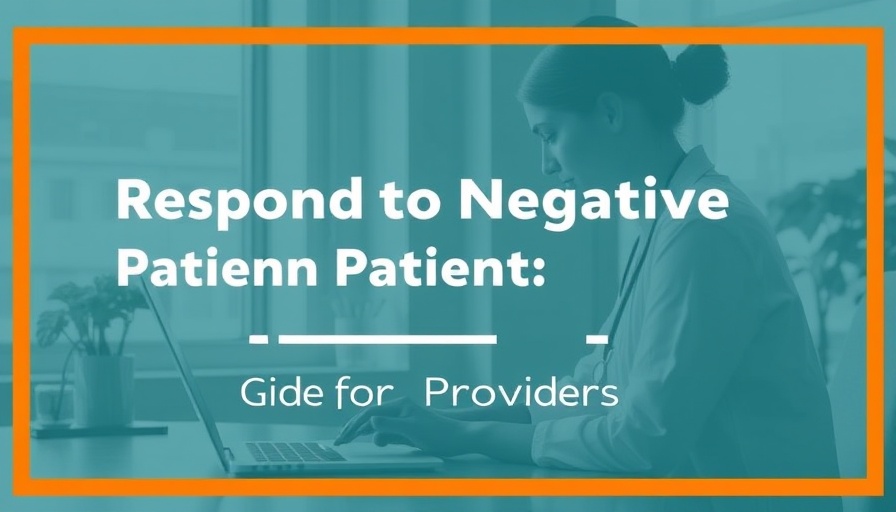
Facing the Inevitable: Why Negative Reviews Matter
In the world of aesthetics, feedback is not just routine; it's crucial to the decision-making process of potential patients. Studies reveal that approximately 77% of prospective patients explore online reviews before scheduling an appointment. That number underscores the importance of both positive and negative feedback in building a reputable practice. In fact, clinicians with a range of reviews, even some negative ones, often appear more trustworthy than those boasting only perfect ratings.
Transforming Criticism into Growth
The arrival of a negative review isn't merely a blow to your professional ego; it's an opportunity for growth and improvement. Many practitioners experience a wave of emotions, including self-doubt and disappointment, upon receiving their first negative feedback. However, it’s vital to remember that this reaction is natural and should not define your value as a provider. Instead, view criticism through a constructive lens; it paves the way for resilience and eventual patient loyalty.
A Practical Approach: The HIPAA-Compliant Response Framework
Understanding how to articulate a response to negative reviews is essential for every practitioner. An effective framework includes four essential steps: pause to assess the validity of the review, craft a professional reply that acknowledges the patient’s concerns, and invite them to resolve the issue offline. This structured approach not only adheres to HIPAA guidelines but creates an avenue for constructive dialogue between you and your patients.
Crafting the Perfect Reply
When addressing a negative review, your crafted response should be more than just damage control. Aim to demonstrate genuine empathy, acknowledging the patient's concern while offering assurance that you're committed to enhancing their experience in the future. For instance, saying, "I'm sorry to hear your experience did not meet expectations; I value your feedback and hope you might consider discussing it with me directly," is an approach that encourages further conversation and shows a commitment to improvement.
Utilizing Feedback as a Turning Point for Better Service
Turning feedback into actionable insights can result in refined practices and enhanced patient experiences. Consider how you can implement changes based on critiques. Perhaps you could improve your service protocol or offer additional training for staff to ensure every interaction is consistent and positive. Keep in mind that many satisfied patients may return after a negative experience because they feel heard and appreciated.
Future of Aesthetic Practices: Adapting to Trends
As the aesthetics field evolves, so too must the practices and methodologies surrounding patient feedback. Staying informed on aesthetic medicine trends and continuously improving service mechanisms are essential to thrive in today’s market. With innovations like minimally invasive techniques and new beauty technologies emerging frequently, adapting based on patient feedback helps to keep practices aligned with current expectations.
In conclusion, while receiving negative reviews can be challenging, they also provide an invaluable impetus for growth and change. By embracing these critiques, clinicians can not only enhance their practice but potentially rebuild trust with dissatisfied patients. Remember the pivotal role your response plays—view every review as an opportunity to grow, learn, and engage with your patients more meaningfully.
Ready to transform your practice? Take the insights you’ve gained from patient reviews and turn them into actionable steps for improvement.
 Add Row
Add Row  Add
Add 




Write A Comment